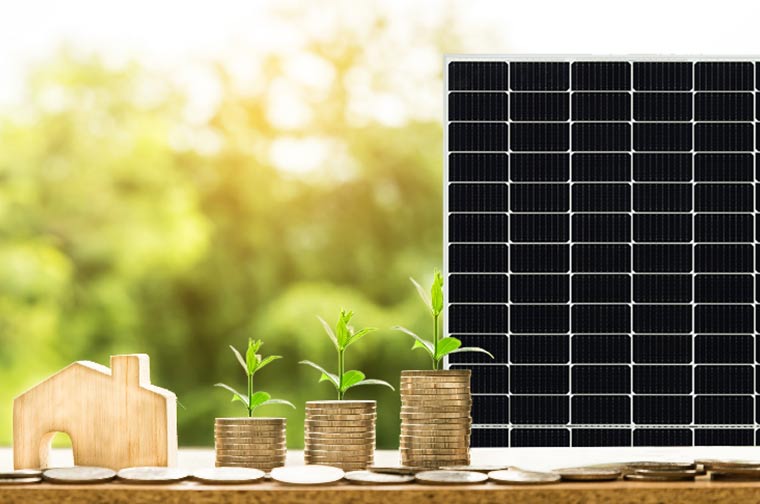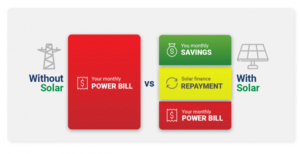It is obviously no secret that solar energy systems rely on sunlight to do their best work. However, many people wonder whether solar panels can still work in cloudy or less optimal conditions. We’re quite lucky in Australia to have good weather all year round, however, the amount of sunlight certainly fluctuates.
Let’s look at how your solar systems perform under different conditions.
The Best Conditions
Naturally, bright sunlight at the height of summer is the best time to for maximum power output from your solar power system. The days are longer during summer, so the number of hours per day that are considered ‘peak’ performance time is longer. The best times of day are usually 10 am – 4 pm, but in summer, you can probably add an hour or two on to either end of this.
Basically, clear, unaffected sunlight for prolonged periods will deliver you the best results.
Does Temperature Matter?
The outdoor temperature does affect solar panel energy production, but perhaps not in the way you’d think. The ideal temperature for solar energy production is around 25 degrees Celsius. Rather than producing more energy if the temperature rises, solar panel efficiency is actually negatively affected.
All solar panels have a coefficient listed on them, generally between 0.20 – 0.50 percent. Essentially, this is the percentage of efficiency your solar panel will lose for every degree Celsius over the optimal temperature.
For example, in high temperatures such as 35 degrees, you could lose around 5% efficiency in your panels.
The Impact Of Clouds
Clouds generally reduce the amount of direct sunlight that can reach your solar panels. As a result, this decreases the efficiency of your solar energy system. It’s difficult to accurately predict the difference in energy production on a cloudy day because the clouds vary so greatly. Thick, consistent cloud cover will certainly impact your system’s performance. However, on windy days where clouds move quickly, your panels may still receive bursts of direct sunlight.
Some panels work better than other panels on dull or cloudy days. Solar panels that use N-Type solar cells have much better performance in low light situations.
Ideally, a clear, cloud-free day is best for maximum efficiency. However, during winter, where clouds are prevalent, you may lose anywhere between 10% – 25% depending on the type of cloud cover. To keep an eye on this, you can use a solar energy monitoring app attached to your solar inverter (like the mySolarEdge app if you have a SolarEdge system) and monitor it in a range of other weather conditions.
What Other Factors Affect Solar Energy Production?
Naturally, the number of solar panels and the capacity of your solar inverter will affect how much energy you can produce. However, in terms of efficiency, there are a couple of other factors that can limit your energy production.
Shade
If your solar panels are affected by shade, it can reduce the amount of energy produced. Most importantly, with traditional string inverter solar systems, if one panel is affected by shade, all the panels on that string will suffer. The output of each panel will drop to the level of the lowest performing panel. So, always try to install panels on parts of the roof that aren’t obstructed by trees or other forms of shade.
If you have shade issues that cannot be avoided, a system that has power optimisers attached to the panels will help. The optimisers let every panel in the system work to its maximum output. So, if one panel is affected by shade, all the other panels will keep pumping out full power.
Position Of Solar Panels
The direction that panels point in relation to north can vastly affect the power production of the system. A professional solar retailer will use a specialised, satellite-based solar mapping tool. This is used to map the panels onto your roof. It considers the direction that panels face and the geographic location and can calculate the estimated power output of the system.
In every state around Australia, there are recommended angles that solar panels should be installed on for maximum efficiency. Most roofs are pitched to a certain angle, and many solar panels are installed to match the roof pitch. However, if you have a flat roof the panels can be mounted on tilted mounts to reach the recommended angle for best production.
Solar Panel Cleanliness
You need to keep your solar panels clean and preferably have them cleaned professionally once a year. This removes the build-up of grime, dust, dirt or even bird droppings that can affect solar energy production. If you do choose to clean solar panels yourself, make sure you’re safe on the roof and never use harsh cleaning products.
Professional Solar Panel Installation
SolarBright is your local expert for solar panels in Sydney. We partner with only the best solar panel, inverter and solar battery storage solutions, so you can be assured of high quality every time. You can even book a free consultation with our team, and we’ll analyse your current consumption to recommend the best system for your needs.
Read Also:
The MySolarEdge App Revolutionising The Future Of Home Solar





